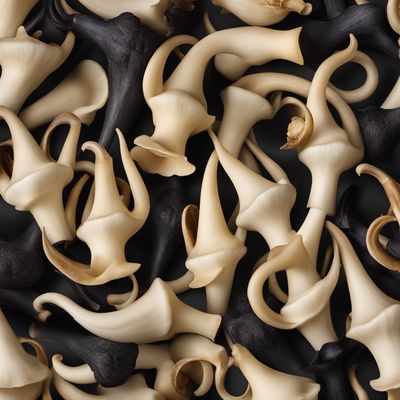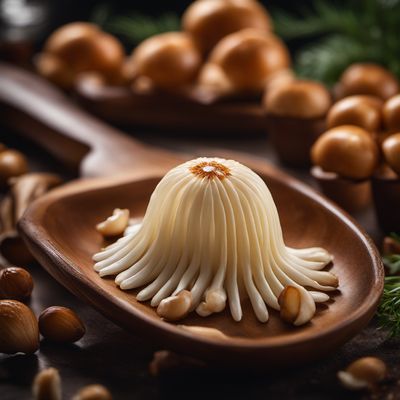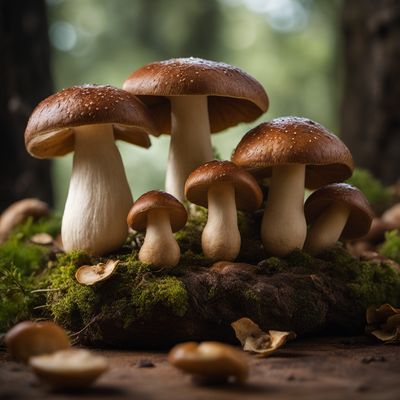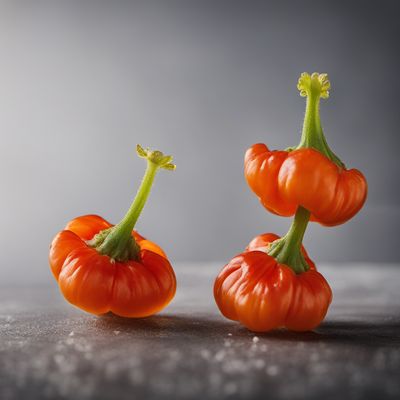
Ingredient
Gypsy mushroom
The Enigmatic Delicacy: Gypsy Mushroom
Gypsy mushrooms, also known as Rozites caperata, are medium-sized mushrooms with a distinctive bell-shaped cap and a slender stem. They have a velvety texture and a rich, earthy flavor that intensifies when cooked. The cap ranges in color from reddish-brown to tan, while the stem is pale and often covered in fine scales. Gypsy mushrooms are highly sought after by mushroom enthusiasts and are prized for their culinary value.
Origins and history
Gypsy mushrooms are native to Europe and North America, where they can be found growing in deciduous forests. They have a long history of culinary use, particularly in European cuisines. In the past, gypsy mushrooms were foraged by Romani people, hence their name. Today, they are cultivated and enjoyed by chefs and mushroom enthusiasts around the world.
Nutritional information
Gypsy mushrooms are low in calories and fat, making them a healthy addition to meals. They are a good source of dietary fiber and contain various vitamins and minerals, including potassium, phosphorus, and selenium.
Allergens
Gypsy mushrooms may cause allergic reactions in some individuals, particularly those with mushroom allergies. It is recommended to exercise caution and consult with a healthcare professional if you have any known allergies or sensitivities.
How to select
When selecting gypsy mushrooms, look for ones that are firm, with a fresh and clean appearance. Avoid mushrooms that are slimy, discolored, or have a strong odor. It is best to purchase them from reputable sources or certified mushroom growers to ensure quality and safety.
Storage recommendations
To prolong the freshness of gypsy mushrooms, store them in a paper bag or a loosely closed container in the refrigerator. This will help maintain their texture and prevent moisture buildup. Avoid storing them in plastic bags, as this can cause them to become slimy.
How to produce
Gypsy mushrooms can be challenging to cultivate due to their specific growth requirements. They typically grow in symbiotic relationships with certain tree species, such as oaks or beeches. It is recommended to consult with experienced mushroom growers or mycologists for guidance on cultivating gypsy mushrooms.
Preparation tips
Gypsy mushrooms can be used in a variety of dishes, including soups, stews, risottos, and pasta dishes. They pair well with herbs such as thyme, rosemary, and sage, as well as ingredients like garlic and onions. Gypsy mushrooms can also be sautéed, grilled, or roasted to bring out their rich flavor and enhance their texture.
Culinary uses
Gypsy mushrooms are highly regarded in European cuisines, particularly in Eastern European countries such as Poland and Russia. They are often used in traditional dishes like mushroom soups, pierogis, and stews. Gypsy mushrooms are also prized by gourmet chefs for their unique flavor and appearance, making them a popular choice in fine dining establishments.
Availability
Gypsy mushrooms are commonly found in deciduous forests in Europe and North America. They are also cultivated in some regions for commercial purposes.
More ingredients from this category

Saint George's mushrooms
The Forest Delicacy

Horns of plenty
Exploring the Delights of Horns of Plenty

Saffron milk cap
The Golden Delicacy: Unveiling the Secrets of Saffron Milk Cap

Hedgehog mushrooms
Exquisite Earthiness: Hedgehog Mushrooms

Morels
The Earthy Delicacy

Other wild fungi
Exploring the Hidden World of Wild Mushrooms

Truffles
The Earth's Edible Gems

Ceps
The King of Mushrooms

Scotch bonnet mushrooms
Fiery Delights: Unleashing the Flavors of Scotch Bonnet Mushrooms

Honey mushroom
The Golden Fungus

Chanterelles
Golden Delicacy